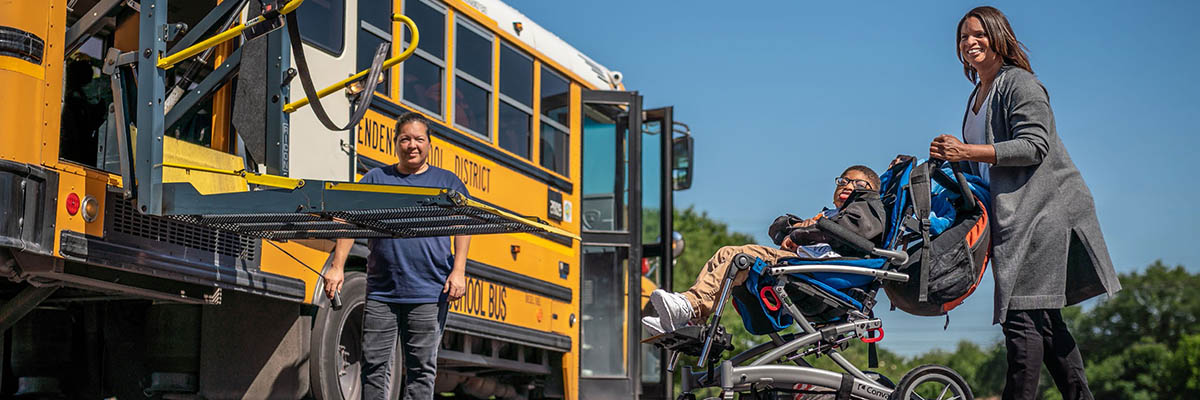Sustain Partnerships for Systems Change
Approaches, Considerations and Resources
SUSTAINING THE WORK
The implementation of cross-sector work is just the beginning. As shared work gains traction, partnerships can drive broader systems change through continued engagement and expanded focus. Key elements and steps for sustaining the work include the following:
Identify ongoing resources: Identifying dedicated resources, such as through a local funder or in collaboration with a public institution, will allow organizations to maintain aligned work and even consider new or broadened approaches to addressing desired systems change. Dedicated resources also allow a partnership to continue its commitment to inclusivity, whether by funding staff time for ongoing community engagement or minimizing the administrative burden on smaller organizations by funding project management.
SUGGESTED RESOURCE:
In Building Impact: A Closer Look at Local Cross- Sector Collaborations for Education, the Teachers College at Columbia University has compiled examples of funding sources, strategies and expenses from eight different cross-sector collaborations focused on education, with greater detail on pages 71–74.
Clarify and adjust partner roles: As work proceeds, partner organizations may find themselves considering a number of important questions to clarify how partners will continue their shared work. How will the partnership structure change over time? Will additional staff or funds be needed? Who is responsible for ensuring that the work will continue, and how often will this group convene? What are the continuity plans for managing staff and organizational turnover? What additional partners do we need to engage to sustain and improve this work?
SUGGESTED RESOURCE:
One way to reconsider partnership roles is to revisit the partnership roles and structures outlined in Stage 4. Additionally, the Intersector Project has The Intersector Toolkit on its website to help support cross-sector collaborations, with a section on “Establishing a Governance Structure” that can help to prompt needed reflection when clarifying and adjusting partner roles.
Scale solutions and pursue systems change: A key question that partnerships will face in moving forward is how the work itself will proceed, retain community engagement and contribute to larger systems change. When cross-sector solutions have been implemented, partnerships may ask themselves, How do we learn from our past work to improve existing programs, scale effective solutions and support policy development that contributes to needed system change? Tools in the following section, on using evidence and evaluation findings, also can help partners plan to scale their solutions.
SUGGESTED RESOURCE:
In its Cross-Sector Partnership Assessment survey, Living Cities encourages partnerships at any stage to reflect on their partnership and makes suggestions for changes that may be required moving forward, such as commitments for future work. This tool can be used as an interactive survey or as a planning and discussion guide to enable groups to reflect jointly.
USING EVIDENCE TO DRIVE SYSTEMS CHANGE
In many cases, organizations come together not only because they seek alignment and greater impact around a specific outcome, but also to create broader systems change, focused on addressing the root causes of structural challenges that perpetuate inequities and disparities.22 Collaboration between the education and housing sectors is no exception and offers a promising opportunity to make progress in dismantling systemic inequities that stand in the way of economic mobility for individuals and families.
Measuring outcomes and monitoring ongoing progress can generate the evidence needed to drive systems change. Having evidence of effective solutions positions cross-sector partnerships to advocate policies that address systemic inequities and usher in broader systems change.
Partnerships can take a number of steps to use evidence more effectively to drive systems change, with examples included here and additional guidance and examples of evaluations of cross-sector collaborations included in Appendix E, under Resources for Stage 5.
Understand the system: Systems mapping, or network mapping, is a visual exercise to identify the individuals and organizations that are key stakeholders within a community and the connections and power dynamics between them, similar to a stakeholder map. These maps help identify the intersection and alignment of key issues within a given geographical area and the factors that influence them. Systems mapping exercises are useful in considering the entry points for seeking systems change to influence policy and funding decisions, because they encourage careful consideration of the power structures in place.
SUGGESTED RESOURCES:
As part of its Systems Thinking Toolkit, FSG focuses on “actor mapping” as one of several tools to better understand a system, including identifying the momentum, blockages and opportunities and helping participants clarify ways forward toward systems change.
In a related blog on Tools for Supporting Systems Thinking and Change, FSG offers brief descriptions of six tools (including actor mapping) to help readers determine which might best suit a partnership’s systems change approach.
Bring in evidence: Evaluations are a powerful tool to reflect on a program’s progress, influence programmatic and funding decisions, and inform the scaling of successful interventions, as well as policy development and advocacy. Evaluations require careful consideration of an initiative’s intended goals and potential impact and can range in the level of effort, time and budget required. Evaluations may be conducted internally by staff or externally by third parties, depending on staff capacity, funding and the level of objectivity needed for the evaluation.
The subject of an evaluation is an important consideration, because evaluations can focus on improving the implementation of an initiative or on assessing its outcomes. For example, in the case of a cross-sector collaboration, an implementation or process study would assess the effectiveness of the partnership itself to help guide continuous improvement. In contrast, an outcomes evaluation would assess the outcomes in the partnership’s target community and could be used to inform future work or advocacy efforts.
Effective evaluations require thoughtful planning and execution to ensure that they can meet their intended purpose. An evaluation plan is a useful tool that outlines the research methods, data collection and data analysis required to complete the assessment. In addition to the resources included here, additional guidance on planning, scoping and conducting an evaluation is included in Appendix E, under Resources for Stage 5.
SUGGESTED RESOURCES:
The Step-by-Step Guide to Evaluation: How to Become Savvy Evaluation Consumers | W. K. Kellogg Foundation
In this evaluation guide, published by the W. K. Kellogg Foundation, organizations can learn more about the elements of an evaluation, including methodologies, staffing and the role of staff and stakeholders.
As organizations begin to engage with evaluation activities, considering an organization’s or partnership’s capacity for evaluation is critical. In this tool, Informing Change outlines different dimensions of capacity to help organizations understand their own evaluation expertise and need for support before proceeding.
One of many resources in the Community Tool Box, this resource includes a series of helpful questions to consider when compiling an evaluation plan.
The access2innovation network provides an overview of monitoring and evaluation in the context of partnership, including a detailed guideline that explains steps to developing an evaluation framework.
Communicate for policy and systems change: Cross- sector partnerships can leverage anecdotal evidence, program documentation, and evaluation and outcome data to spur policy change and other system-level improvements. When organizations can point to documented examples of proven approaches to service delivery — or to barriers in local systems— they can more effectively advocate systems change and contribute to the development of new policies. Although many organizations may not have the resources for a full-scale evaluation, they still have an opportunity to drive systems change by highlighting compelling stories that demonstrate the necessity of their work. Evidence and data of all kinds can be used to make a powerful case for changes to new or proposed policies and funding decisions. For example, the documented experiences of children and families, as seen in the following case study about Project Hope, proved to be a useful advocacy tool. Even in the absence of a formal process, using the principles of evaluation can be a helpful place to start.
The following evaluation reports offer examples of how housing- and education-focused project evaluations can be documented, summarized and used to develop recommendations for future work or future systems change. Additional examples of evaluations and resources using evaluation data are included in Appendix E, under Resources for Stage 5.
RELEVANT EXAMPLES:
The Youth Count Texas! Project: Process Evaluation Report | Texas Network of Youth Services
Housing First Collaborative Year One Evaluation Report | Charles and Helen Schwab Foundation
Student and Family Stability Initiative Year One Evaluation Report | King County Housing Authority & Highline Public Schools
[022]
22 Wharton and Evans, “Systems Change.”


